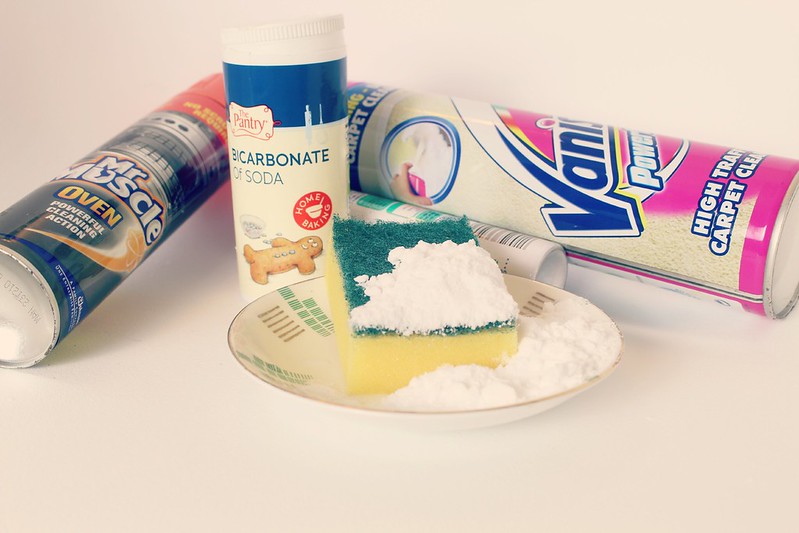Wooden window frames and sills can be an excellent addition to a house, particularly if you want to retain the traditional appearance of a period property. However, wooden frames do require a little bit more maintenance than frames made from uPVC or aluminium
Due to the nature of the product, it stands to reason that wooden windows require a little more attention from the outset; this could include wood staining, treatments, oiling or painting. Like other types of window frame, over time they will need a little TLC. With constant exposure to different weather conditions, it’s likely they’ll need a good clean every now and then too. But what is the best way to keep wooden window frames clean?
How Do You Clean and Treat Wooden Window Frames?
Here we’re going to take a look at the different methods you can use to keep your wooden frames clean without causing damage, as well as preventative measures that can be applied to help protect your windows and increase longevity.
Simply Does It
Sometimes the best methods are the simplest. There’s no need to spend a small fortune buying specific cleaning solutions when household products can work just as well.
There are however different techniques to consider depending on the finish of your wooden window frames:
Painted Windows
Provided that the paint is in good condition:
- Use a soft brush or scouring pad with some washing up liquid to lift the dirt.
- Rinse thoroughly with warm water, using a soft cloth to remove any excess water and product.
- If your windows and sills are painted white, a diluted bleach solution can also be used to remove stubborn stains or mould patches.
If the paintwork is a little worse for wear, use a soft bristle brush to remove any flakes before cleaning. A new coat of paint would also be recommended to help maintain protection.
Stained Windows
- Use a soft bristle brush to remove any excess dirt build-up.
- Once you’re satisfied that all of the excess dirt has been removed, use a dilute solution of washing up liquid and warm water with a soft cloth to wipe away any marks or grubby areas. Using a spray bottle may help make the job easier.
Avoid using bleach on stained windows as this can cause discolouration and will dry out the wood. To help protect the integrity of the wood against sunlight and water damage, re-stain your wooden windows every 2-3 years depending on the colour chosen.
Varnished Windows
If your windows are varnished and have started to look a little dull, it might be time to give them a good clean.
- The same methods used for stained windows will often get the best results.
- If stubborn stains or watermarks can’t be shifted, use a fine sandpaper to remove the top layer of varnish, reapplying as you go. Reapplication should only be done when the frames are completely dry; this will prevent the varnish from “bubbling” and the wood from rotting.
Waxed or Oiled Windows
As with stained and varnished windows, a good going over with a soft bristle brush and a diluted washing up liquid solution is the most effective method for removing dirt and grime. As most household detergents and rainwater can be slightly acidic, it’s important to re-apply the wax or oil regularly to feed the wood and help prevent weather damage. Do not use bleach to clean natural wood finishes as this will cause discolouration.
Useful Tips for Cleaning Wooden Windows
Being conscientious when cleaning wooden window frames is one thing, but no one (we imagine!) wants to spend hours doing it. These tips and tricks will help make cleaning your wooden windows that bit easier:
Removing Mould and Mildew from Your Window Frame
As we’ve mentioned before, using bleach to remove mould spots on painted wood is effective, but this won’t work for stained, varnished or waxed/oiled wood, and could do more damage than good.
Try using a vinegar dilute, instead.
- Mix four parts water with one part vinegar.
- Soak the mould spots.
- Leave for a few minutes.
- Clean as advised above.
If the mould and mildew build up is on the inside of the window, consider investing in a de-humidifier. This will reduce the amount of moisture in the room, thus reducing the chances of mould growth.
When Something a Little Stronger is Needed
If your window frames are particularly grubby and washing up liquid isn’t quite cutting it, add a teaspoon of bicarbonate of soda to give it a little more kick. Alternatively, use biological wash powder diluted in warm water; this is particularly good for removing organic matter such as bird droppings and plant sap.
Avoid Pressure Washing Your Window Frame
This might sound like common sense, but it’s all too easy to reach for the pressure washer to speed things up. This can however be detrimental for your wooden window frames. Not only could the pressure of the water cause the glass in your windows to break, it can also cause the frames to warp and even damage seals and paint work.
Use Liquids Sparingly
If your windows are varnished, waxed or oiled, minimise use of liquids as much as possible. Avoid soaking the wood and always remove any excess moisture with a dry, lint-free cloth so as not to cause water marks or crystallisation as the solution dries.
Problem Solved
As wonderful as they are, cleaning wooden window frames can be a bit of a sticking point, but we hope you’ve found our guide useful. Follow our tips and tricks and we’re confident your windows will look tip top for many years to come, without breaking the bank!
If you’re looking for new wooden windows, we have a fantastic, high quality range including windows from leading manufacturers JELD-WEN. Get in touch with our friendly team with any enquiries.




